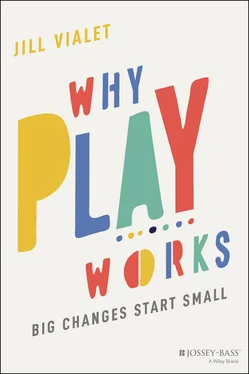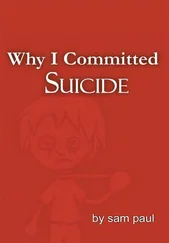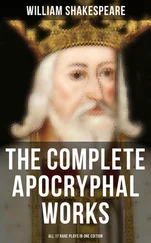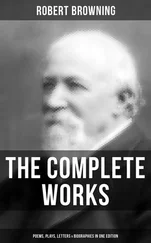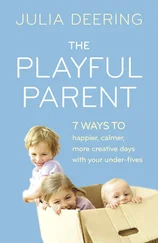My view of Playworks was shaped by two observations. First, is the horrible observation that the recess length was only 15 minutes. This is a crime. It is not enough time for children to play. Given that, it seemed beneficial to have a young adult help get something started. I noticed that there was no requirement to participate and that the young Playworks person did a good job of stepping out and letting the kids take control once the game was started. I also learned from a friend (who was a math consultant visiting many schools in Boston) that the Playworks facilitator was typically the most popular person at school and was bringing a more playful attitude to everyone.
Watching Playworks coaches connect with students by creating a structure for play that the students could successfully navigate and ultimately control, emphasizing student volition, and ultimately protecting the time against school concerns about issues of safety, Peter came to see our work—although not his first choice—as nonetheless a necessary defense of play in schools.
UC Santa Cruz sociologist Rebecca London has spent much of the past 10 years studying recess, with a particular focus on Playworks. In her book, Rethinking Recess: Creating Safe and Inclusive Playtime for All Children in School, she offers that Playworks’ approach falls outside this debate by providing an alternative: organized play.
Recess, like any other time of the school day, requires some planning. My research findings demonstrate that schools can create a positive recess environment through planning and organization that is neither structured nor unstructured and that supports both physical activity and social and emotional growth. It is not a simple one‐size‐fits‐all approach, but rather a customized approach to recess planning and organization that requires firsthand knowledge of the school context and the students’ needs—information that all school administrators already have. Given the potential benefits and drawbacks of both structured and unstructured recess approaches, and the multiple ways that schools can support students to develop, this hybrid approach of organized recess makes the most sense and has been proven to be effective. 12
Most mammals begin life—and their exploration of the world—through play. Stuart Brown looks closely at the connection between animal behavior and play in his work, with a particular focus on the detrimental impact of play deprivation. Brown compares the science of play to the science of sleep and argues compellingly that its implications for neuroscience are comparable. Thinking about sleep, and how our understanding of its importance has changed dramatically over time, is a useful point of comparison. As Dr. Brown has pointed out, back in the 1940s, sleep was just as “undefined and enigmatic” as play is today.
Rats are often cited as the optimal animal to study in exploring the neurobiology of play because they are exceptionally playful prior to rat puberty, displaying play behaviors before they are even weaned. Although rats that are systematically bred for certain physiological and/or behavioral traits demonstrate differing degrees of playfulness, postnatal experiences have been shown to significantly influence rat play as well. The amount of licking and grooming rats received has been correlated to less fearful rat pups, and although extended separation from the mother rat has negative impact on pup behavior, consistent and brief daily separations from the mother rat are linked to increased play behavior. Interestingly, these brief separations are also connected to an increase in licking and grooming by the mother rat, creating a self‐reinforcing system.
Although there is still much to be learned about the neuroscience behind human play, it has been the subject of research for over half a century, building on the foundation of understanding of animal behaviors. Dr. Joe Frost wrote at length on the subject beginning in the 1970s, and more recently Dr. Jane McGonigal has written and spoken extensively about the neuroscience behind video games. More research is needed to better understand the connections between play and neural activity. What is clear is that playful learning experiences that are characterized by joy, meaning, active engagement, repetition, and social connection are associated with increased dopamine levels, stimulating networks in the brain associated with memory, metacognition, analogical thinking, creating insight, motivation, and reward. 13
The science about mirror neurons reinforces the idea of play benefiting our brains, even as the popular beliefs about mirror neurons may have gotten out a bit ahead of what the science has fully determined. Much of what is known is based largely on research involving adult monkeys, where mirror neurons have been documented firing both when an animal acts and when the animal observes the same action performed by another. Thus, the neuron “mirrors” the behavior of the other, as though the observer were itself acting. Some researchers believe this explains how we learn to generate our own actions and how we monitor and interpret the actions of others, and other researchers maintain that it could point to the neural basis of empathy. This connects to play because shared joy unites us, supporting attunement and a sense of understanding that enable us to collaboratively adapt to complex situations. Looked at from this perspective, play's impact on the brain is essential not just to our survival but also to our potential to collectively thrive.
Finally, Alison Gopnik, author of The Scientist in the Crib, has been a strong advocate for considering how early human development might influence models of machine intelligence, with an emphasis on curiosity as a critical part of the process. 14 In her more recent book, The Gardener and the Carpenter, Gopnik unpacks the role of parents and caregivers in supporting this curiosity and the importance of creating the conditions that encourage children's brains to do the deeply complex work of creating causal models. As we will explore deeper in this book, among the most important of these conditions is the opportunity to play and make discoveries that are free from expectations, filled with magic, and disconnected from any apparent purpose.
* * *
Phew that was a lot! For those of you who appreciate the age‐old teaching strategy of “review and summarize,” here you go:
Play is tricky to define to everyone’s satisfaction, in part because we all have a personal experience of some kind and in part because it is expressed and offers value in so many different ways. (Plus some of us have really strong feelings about it!) One way to understand play is to observe and consider all the ways play shows up in your own life, as well as all the ways we use the words play and playing and player in our day‐to‐day lives. It's also important to connect the ubiquitous presence of play with the different feelings we get from it. And that's what the rest of this book is about.
One critical aspect of play is volition; individuals get to choose what and how they play. Volition is not equivalent to lack of rules or structures. It's simply a recognition that we want to choose when to jump in and play with each other. We don't want to be forced or compelled. And in our experience, creating the conditions for children to be inspired to play is a powerful lever to achieve all the benefits play offers (see next bullet).
Scientific research has identified a wide array of benefits and developmental impacts from play, some obvious like physical activity and others not so obvious, such as “fertilizing brain activity.” Play is one of those subjects about which science has a lot more to learn. How fun!
Читать дальше
